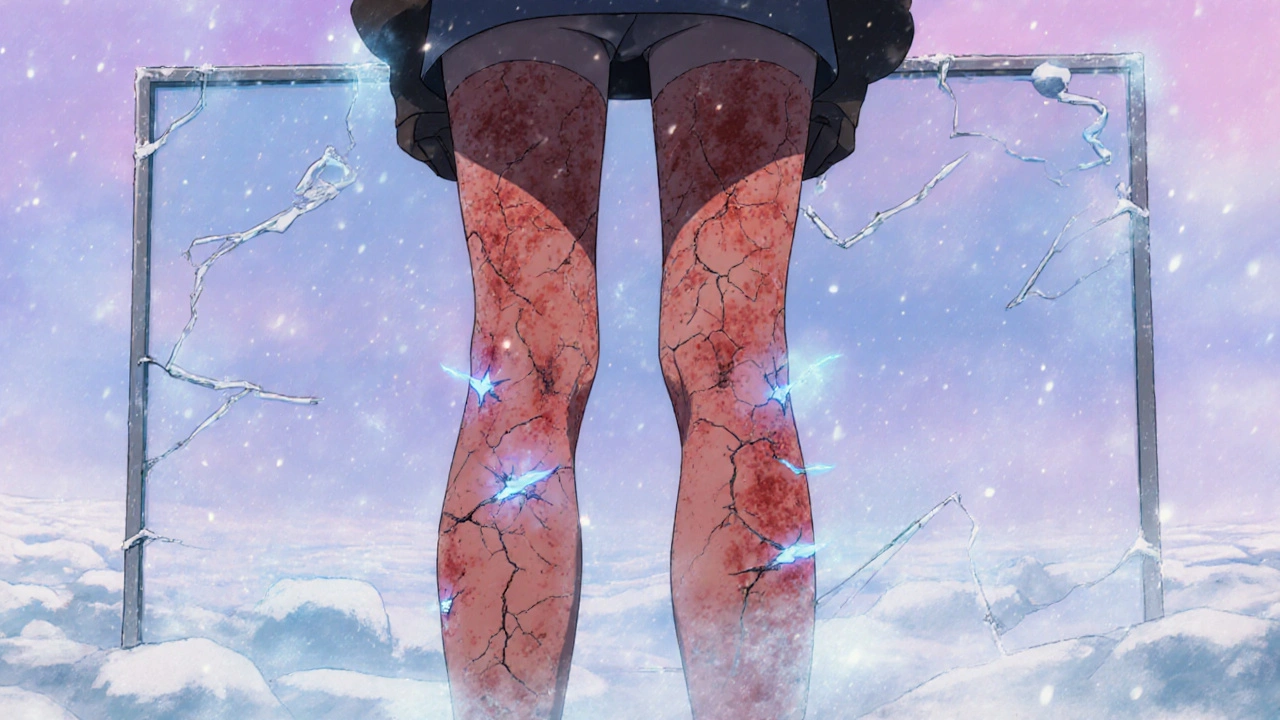
Why Your Eczema Flares Up (And What You Can Actually Do About It)
If you or someone you care about has atopic dermatitis, you know the cycle all too well: skin gets dry, it starts to itch, you scratch, it gets worse, and the whole thing repeats. It’s not just annoying-it’s exhausting. The good news? Most flares aren’t random. They’re triggered by things you can control. And the single most powerful tool you have? Emollient therapy.
Atopic dermatitis, often called eczema, isn’t just dry skin. It’s a broken skin barrier. Your skin normally acts like a wall, keeping moisture in and irritants out. But in atopic dermatitis, that wall has cracks. Genetics play a role-about 1 in 3 people with moderate to severe eczema have a mutation in the filaggrin gene, which weakens the skin’s natural defenses. That means water escapes easily (transepidermal water loss hits 15-30 g/m²/h, compared to 5-10 in healthy skin), and irritants slip right in.
What Makes Your Eczema Flare? The Real Triggers
Not every itch is the same. Flares happen when your skin’s already fragile state gets pushed over the edge. Here’s what actually triggers them, backed by clinical data:
- Cold, dry air-especially below 40% humidity-increases flare risk by 37%. Winter isn’t just uncomfortable; it’s a direct irritant.
- Heat and sweat-when temperatures rise above 80°F (27°C), 68% of patients report flares. Sweat contains salts and urea that sting broken skin.
- Harsh cleansers-sodium lauryl sulfate, found in many soaps and shampoos, disrupts the skin barrier at concentrations as low as 0.5%. Even "gentle" body washes can be problematic.
- Fragrances and preservatives-15% of people flare from added scents. Preservatives like methylisothiazolinone cause contact dermatitis in 5.7% of users.
- Stress and sleep loss-while not direct irritants, they worsen inflammation and lower your skin’s ability to heal.
One thing most people miss? It’s not just about avoiding triggers. It’s about constantly repairing the barrier between flares. That’s where emollients come in.
What Emollient Therapy Actually Does (And Why It’s Non-Negotiable)
Emollients aren’t moisturizers in the traditional sense. They’re skin barrier repair tools. Think of them as filling the cracks in your skin’s wall. They work in three ways:
- Occlusives-like petrolatum (Vaseline)-form a protective film that cuts water loss by up to 98%. They’re greasy, but they work.
- Humectants-like glycerin-pull water into the skin. Optimal concentration? 40-50%. Too little, and they don’t help. Too much, and they can dry skin out.
- Emollients-like ceramides-replace the lipids your skin is missing. Ceramides make up over 50% of the skin’s natural barrier. In eczema, levels are often 30-50% lower.
Used consistently, emollients reduce transepidermal water loss by 25-50%. That’s not a small win. It means fewer flares, less itching, and less need for steroids.
Dr. Eric Simpson, a leading eczema researcher, puts it bluntly: "Without consistent barrier repair, no other treatment can be fully effective." That’s why the American Academy of Dermatology and the National Eczema Association both rank emollients as #1 first-line treatment.
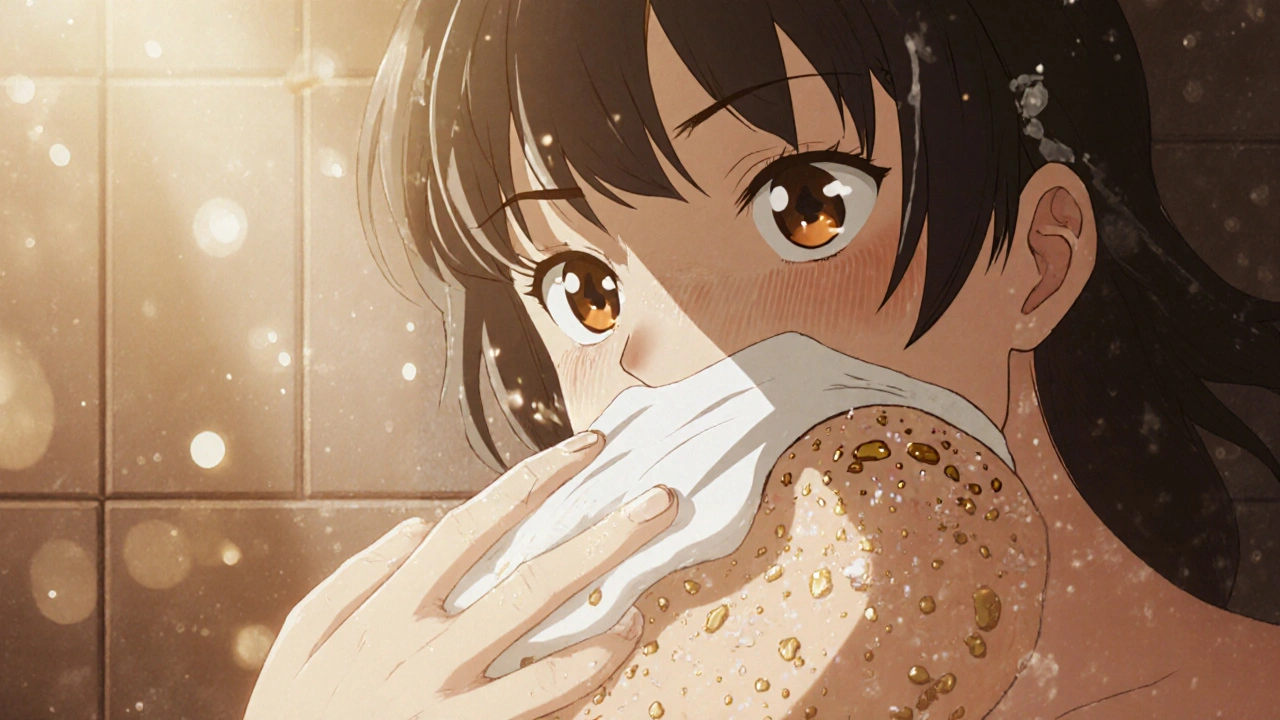
The Right Way to Apply Emollients (Most People Get It Wrong)
Applying emollient once a day? That’s not enough. The research is clear: twice daily is the minimum. But timing matters even more.
Apply within 3 minutes of getting out of the bath or shower. That’s when your skin is still holding onto water. Locking it in now gives you 50% more hydration than waiting even 10 minutes. This is called the "soak and seal" method:
- Take a 15-20 minute lukewarm bath (not hot).
- Pat skin dry gently-don’t rub.
- Within 3 minutes, apply emollient all over.
- Use 2-3 finger units (the amount from the first joint to the tip) per body area-like one arm, one leg, or your chest.
Dr. Amy Paller’s research shows patients who follow this routine have significantly fewer flares. And here’s the kicker: those who use over 100g of emollient per week have 43% fewer flares than those using less than 50g. That’s about 2-3 tubes a month for an adult.
What to Look for in an Emollient (And What to Avoid)
Not all creams are created equal. Here’s what works-and what doesn’t:
| Feature | Good | Avoid |
|---|---|---|
| Active Ingredients | Petrolatum, ceramides (0.5-3%), glycerin (40-50%) | Alcohol, fragrances, essential oils |
| Preservatives | Phenoxyethanol, sodium benzoate | Methylisothiazolinone, parabens |
| Texture | Thick ointments for flares, lotions for maintenance | Water-based sprays or gels |
| Brand Examples | CeraVe, Eucerin, Vanicream, Vaseline | Scents and "natural" brands with essential oils |
Reddit users with eczema consistently rank fragrance-free, ceramide-rich products like CeraVe and Vaseline as most effective. One user shared that switching to plain petrolatum cut their flares from 18 per year to just 3. But cost is a barrier. Ceramide creams average $18.99 per tube; petrolatum is under $9. If you’re on a budget, petrolatum is the most effective option you can buy.
When Emollients Aren’t Enough
Emollients are the foundation-but they’re not a cure. In mild cases, they clear up symptoms in 30-40% of people. In moderate to severe cases? You’ll likely need more.
Topical corticosteroids (TCS) are still the go-to for active flares. When used with emollients, clearance jumps to 70-80%. For sensitive areas like the face or eyelids, doctors often prescribe tacrolimus or pimecrolimus-non-steroid options that don’t thin the skin.
For severe, persistent eczema, biologics like dupilumab can reduce flares by 70-80%. But even here, emollients are still required. You don’t replace them-you build on them.
And here’s something few talk about: emollient resistance. In 8-12% of severe cases, long-term Staphylococcus aureus overgrowth makes the skin less responsive to emollients. That’s when your doctor may recommend bleach baths or antibiotics alongside your routine.

The Hard Truth: Why Most People Quit
Here’s the biggest problem with emollient therapy: people stop using it. Studies show only 35% of patients stick with it after 6 months. Why?
- Texture-68% say it’s too greasy or sticky.
- Time-58% say applying twice daily is "too much."
- Cost-prescription emollients add up, especially for families.
But here’s the reality: skipping emollients doesn’t save time-it costs you more. More flares mean more doctor visits, more steroid creams, more sleepless nights. The 10 minutes you spend applying cream saves you hours of scratching and discomfort.
Try this: Keep your emollient in the bathroom, next to your toothbrush. Make it part of your morning and nighttime routine-like brushing your teeth. Use a large tub (250-500g per week) so you’re not constantly buying small tubes. And if you hate the feel of thick ointments? Try a ceramide lotion during the day and petrolatum at night.
What’s Next? The Future of Eczema Care
Science is moving fast. In May 2023, the FDA approved the first emollient with sustained-release ceramides-Ceramella MD-that keeps working for up to 12 hours. That’s a big step.
Researchers are now testing "smart" emollient dispensers that track usage and remind you when you’re falling behind. Others are developing microbiome-targeted creams that help rebalance the skin’s good bacteria.
But here’s the truth: none of these breakthroughs matter if you don’t use the basics. Emollient therapy isn’t flashy. It’s not a miracle cure. But it’s the one thing every expert agrees on: if you do nothing else, do this.
Bottom Line: Start Here Today
If you have atopic dermatitis, here’s your action plan:
- Stop using scented soaps and body washes. Switch to fragrance-free, soap-free cleansers.
- Buy a large tub of petrolatum (Vaseline) or a ceramide cream like CeraVe.
- After every bath or shower, pat dry and apply emollient within 3 minutes.
- Apply again in the morning, even if your skin feels okay.
- Use at least 100g per week. More if you’re flaring.
You don’t need expensive products. You don’t need to be perfect. You just need to be consistent. Your skin isn’t broken beyond repair. It just needs the right support-and that starts with emollients.
Can emollients cure atopic dermatitis?
No, emollients don’t cure atopic dermatitis. They manage it by repairing the skin barrier, reducing water loss, and preventing flares. They’re the foundation of treatment, but for moderate to severe cases, they’re usually combined with other therapies like topical steroids or biologics.
How often should I apply emollient?
Apply twice daily-morning and night. If your skin is very dry or you’re having a flare, apply more often. The key is consistency. Applying within 3 minutes after bathing is critical for maximum effectiveness.
Is Vaseline better than expensive creams for eczema?
For many people, yes. Petrolatum (Vaseline) is one of the most effective occlusives, blocking 98% of water loss. It’s cheap, simple, and free of fragrances and preservatives that can irritate sensitive skin. Expensive ceramide creams can be helpful, but they’re not necessary for everyone. Start with petrolatum if you’re unsure.
Why do some emollients make my skin feel sticky?
Sticky feelings often come from high concentrations of humectants like urea or glycerin, especially in humid climates. These ingredients pull water into the skin but can leave a tacky residue if not fully absorbed. Look for products with lower urea content or switch to a petrolatum-based ointment if stickiness is bothersome.
Can I use emollients every day long-term?
Yes. Emollients are safe for daily, long-term use. Unlike topical steroids, they don’t cause skin thinning or other side effects. In fact, using them daily reduces flares by 36% over six months. Consistent use is the goal-not just during flares.
What’s the difference between emollients, moisturizers, and lotions?
All emollients are moisturizers, but not all moisturizers are emollients. Emollients are specifically formulated to repair the skin barrier with ingredients like ceramides, cholesterol, and fatty acids. Lotions are mostly water and may not provide enough barrier repair. Ointments (like petrolatum) are the most effective emollients because they contain the least water and the most occlusive agents.
If you’ve been avoiding emollients because they feel messy or don’t seem to work fast enough, give them another shot-with the right product, the right timing, and the right mindset. Your skin will thank you.


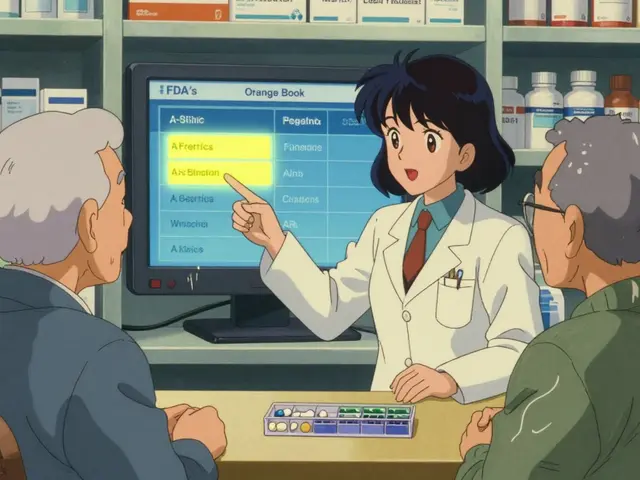
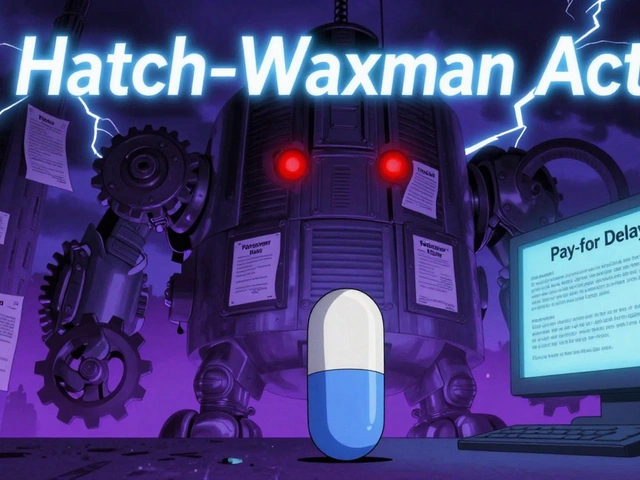
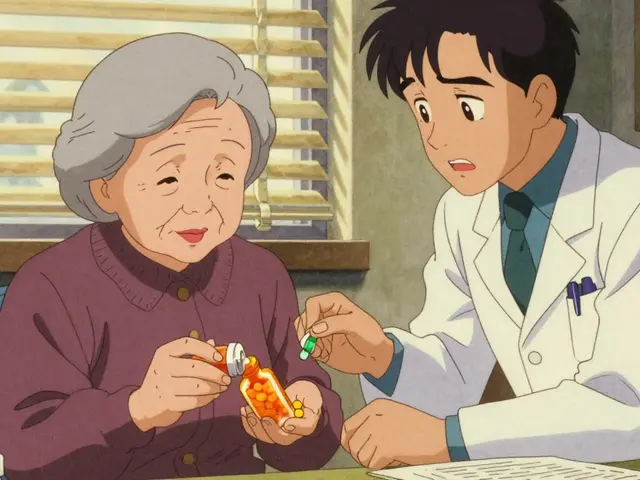
14 Comments
Just use Vaseline. Done. 🤷♂️
I’ve been following the soak-and-seal method for 8 months now, and honestly? My skin hasn’t been this calm since I was a kid. I used to go through 3-4 tubes of expensive ceramide cream every month-then I switched to plain petroleum jelly from the dollar store and cut my flare-ups by 70%. It’s not glamorous, but it works. I apply it right after my shower, even if I’m half-asleep. I keep a big tub next to my toothbrush so I don’t forget. People act like it’s a chore, but it’s literally the only thing that stops me from scratching my arms raw at 3 a.m. I don’t care if it’s greasy-I’d rather be greasy than itchy.
ok but have u ever thought that the whole eczema industry is just a scam? like why do they sell u ceramides when the real problem is the water fluoridation in your tap? and the 5G towers making your skin 'vibrate out of balance'? i read a blog post once that said dermatologists get paid by big pharma to push creams so u keep buying them... also i tried vaseline once and my skin turned purple? maybe its the chemicals in the jar? idk man but i think this whole thing is a distraction from the real enemy: the government.
In Nigeria we don’t need all this science talk. We use shea butter and palm oil since our grandmas’ time. Why do you think we have less eczema here? Because we don’t trust your fancy American creams with 17 ingredients. Your skin is weak because you eat processed food and sit in AC all day. We wash with ground plantain and rub on coconut oil. Simple. Natural. Effective. Stop overcomplicating everything. Your skin doesn’t need a PhD to heal.
The data here is solid. Transepidermal water loss metrics? Ceramide depletion percentages? This isn’t anecdotal-it’s biomechanical. The barrier isn’t just 'dry'-it’s structurally compromised. Emollients aren’t moisturizers; they’re lipid scaffolding. And the 3-minute window post-bath? That’s not a suggestion-it’s a thermodynamic imperative. Water molecules evaporate exponentially after surface contact. Delay application by 10 minutes and you lose 50% of the hydration potential. That’s not opinion. That’s physics. And if you’re not using 100g/week? You’re not treating. You’re just dabbling. You’re not managing eczema-you’re negotiating with it. And it’s winning.
Let me guess-this was written by a Big Dermatology lobbyist. Who funds these 'studies'? Johnson & Johnson? Unilever? They want you to buy $20 creams so you never question why your skin is breaking down in the first place. It’s not the barrier-it’s the toxins in your food, your water, your air. They don’t want you to know that. They want you to keep slathering on their chemical lotions while your immune system gets worse. I stopped using all creams. Went gluten-free, salt-free, no electronics after 8 PM. My eczema cleared in 3 weeks. Coincidence? I think not.
Ah, the sacred ritual of the soak-and-seal. The modern-day sacrament of the dermal faithful. We’ve elevated petroleum jelly to the status of a sacramental oil, anointing our cracked flesh with the holy grease of Vaseline. And yet-how profoundly tragic that we’ve reduced the mystery of human skin, this living, breathing cathedral of sensation and memory, to a mere engineering problem: seal the cracks, regulate the humidity, optimize the lipid ratios. We’ve forgotten that eczema is not a defect of the skin-it is the skin screaming. And no ceramide, no occlusive, no 100g-per-week regimen can quiet the existential cry of a body that feels alien in its own vessel. We treat the symptom. We never ask why the vessel was broken in the first place.
I’ve had eczema since I was 5. Tried everything. Ceramide creams, steroid ointments, bleach baths, even UV therapy. What actually changed things for me? Consistency. Not the product. Not the price. Just doing it. Every. Single. Day. Even on days my skin looked fine. I use CeraVe lotion in the morning, Vaseline at night. I don’t overthink it. I just do it. And yeah, it’s sticky. And yeah, it takes 5 minutes. But I’d rather spend 5 minutes than 5 hours scratching. Simple.
This post is 90% correct. But let’s cut the fluff. You’re not going to fix eczema with creams if you’re still using Dove soap, taking 20-minute hot showers, and sleeping in a 75-degree room with a ceiling fan blowing on you. You’re not 'trying'. You’re performing a half-assed ritual. If you’re not using 100g/week, you’re lying to yourself. And if you think 'natural' oils are better? Go ahead. Rub lavender oil on broken skin and see how that goes. Spoiler: it’s not 'natural healing'. It’s contact dermatitis with extra steps. Stop romanticizing. Start treating.
I just want to say thank you for writing this. I’ve been reading about eczema for years, and this is the first time someone explained why emollients aren’t just 'moisturizers'-they’re actual repair tools. I used to feel guilty for not using them enough because I thought I was 'overdoing it'. But now I realize I was underdoing it. I started applying twice a day after my shower, and within two weeks, the redness on my arms faded. I still have bad days, but I don’t panic anymore. I just reach for the jar. It’s not a cure, but it’s peace. And honestly? That’s more than I’ve had in years.
I used to hate the greasy feel but now I keep a big tub of Vaseline in my bathroom and slap it on right after my shower. It’s like a warm hug for my skin 😊 I also switched to CeraVe body wash and no more burning after showers. My partner even said my skin looks 'less angry' now lol. So yeah, it’s weird at first but it works. Just do it.
I used to think I was too busy for emollients-until I had a flare that kept me awake for three nights straight. Now I do it every morning and night like brushing my teeth. I even keep a small tube in my purse. My daughter has eczema too, and we do it together now. It’s not about being perfect. It’s about showing up. And honestly? It’s the most self-care I’ve ever done for myself.
There’s a quiet violence in the way we treat our skin-as if it were a machine to be calibrated, not a living membrane shaped by trauma, stress, inherited grief, and the slow erosion of modern life. We obsess over ceramide ratios and transepidermal water loss like it’s a math problem, but we ignore the silence between the itch and the scratch-the loneliness of the nights spent awake, the shame of visible skin, the way strangers stare at your arms like they’re diseased. Emollients don’t heal the soul. They only quiet the body. And yet, isn’t that enough? Isn’t it everything? To be able to wear a short-sleeved shirt without fear? To sleep without blood on your sheets? Maybe the real miracle isn’t the petrolatum-it’s that we still believe, against all evidence, that our skin can be made whole again.
John Foster’s comment above? That’s the real truth. We’re treating symptoms like they’re the disease. The skin is the mirror. The real question isn’t 'what cream to use?'-it’s 'what are we running from?'